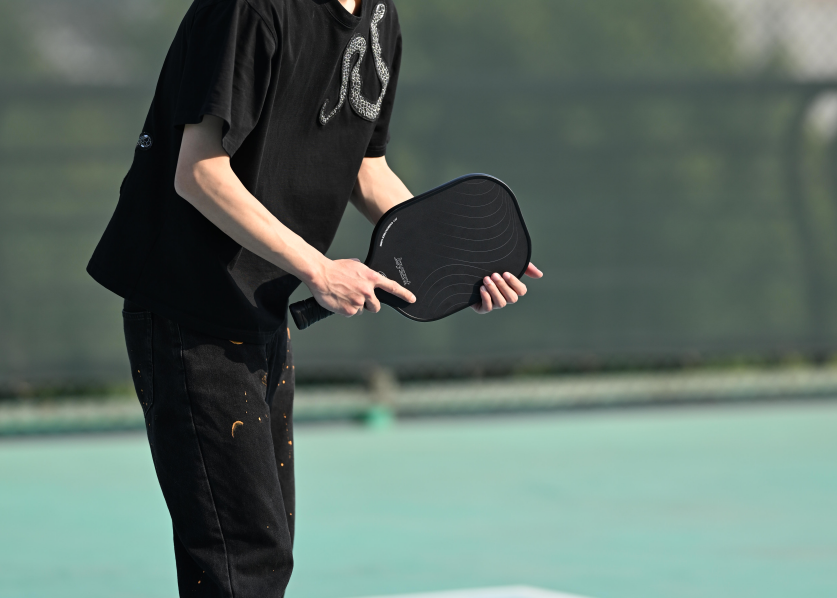
What Does Paddle Swing Weight Really Mean?
When shopping for a new pickleball paddle, you’ll likely see specs like “weight,” “core thickness,” or “material.” But one of the most overlooked—and most important—factors is something called swing weight.
So what exactly is swing weight? Why does it matter? And how can understanding it help you choose a paddle that actually fits your game?
Let’s break it down.
⚖️ Swing Weight vs. Static Weight
At first glance, “weight” seems like a simple number. But static weight (the number you see on a product page, like 7.9 oz or 8.3 oz) only tells you how heavy the paddle is on a scale.
Swing weight, on the other hand, is about how heavy the paddle feels when you swing it.
Think of it this way: two paddles might weigh exactly the same, but one could feel faster and easier to maneuver—because its weight is distributed differently.
That’s swing weight. It’s influenced by the balance point of the paddle—whether the weight is centered toward the handle (head-light), the tip (head-heavy), or evenly distributed (balanced).
🔍 Why Swing Weight Matters
1. Power vs. Control
-
Higher swing weight = more momentum, more power on drives and serves
-
Lower swing weight = quicker reactions, better control at the net
If you like to blast passing shots or put-away smashes, a higher swing weight may work in your favor. If you prefer quick hands at the kitchen and precise resets, you might benefit from a lower swing weight.
2. Fatigue & Injury Risk
A paddle that feels too “heavy” during swings can lead to wrist or shoulder fatigue, especially over long matches. Even if the static weight seems reasonable, a head-heavy paddle can strain your arm.
Understanding swing weight helps you choose a paddle that’s powerful and sustainable for your body.
3. Timing & Reaction Speed
Higher swing weight paddles require more time and effort to change direction mid-swing. This can affect your ability to adjust to fast rallies at the net.
For doubles play, where reaction speed is crucial, many players prefer a more balanced or slightly head-light swing weight for agility.
📊 How Is Swing Weight Measured?
Unlike static weight, swing weight isn’t something you can eyeball. It’s measured using a process called rotational inertia testing, which evaluates how much force is needed to start the paddle’s movement.
Most brands don’t publish swing weight numbers publicly (yet), but specialized paddle testing labs and reviewers do provide this info.
For reference:
-
Low swing weight: under 110
-
Moderate: 110–120
-
High: 120+
(Some top paddles go as high as 130+.)
🧠 How to Choose the Right Swing Weight for You
There’s no “best” swing weight—it depends on your playstyle, strength, and goals. Here’s a basic guide:
| If you’re... | Look for... |
|---|---|
| A beginner | Low to mid swing weight (105–115) |
| A fast-hands net player | Lower swing weight (<115) |
| A power-focused singles player | Higher swing weight (120+) |
| Recovering from arm/wrist strain | Lower swing weight (under 110) |
| Looking for all-around performance | Mid-range (115–120) |
🏓 Joysent’s Approach to Swing Weight
At Joysent, we design our paddles with swing weight in mind—not just static weight. Whether you’re looking for quick-hand control or baseline power, our lineup offers paddles with carefully balanced swing dynamics.
We even offer custom weight tuning for select models—because performance isn’t just about what a paddle weighs, it’s about how it feels in motion.
💬 Final Thoughts
Swing weight might sound like a technical detail—but for players who care about how their paddle responds in real game situations, it’s one of the most important specs to understand.
The next time you’re demoing a new paddle, don’t just ask: “How much does it weigh?”
Ask: “How does it swing?”
Because in pickleball, feel is everything.








